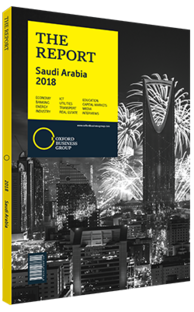Saleh Al Solami, Secretary General, Saudi Exports Development Authority: Interview

Interview: Saleh Al Solami
What measures are being taken to boost export performance and diversification?
SALEH AL SOLAMI: Saudi Exports worked on developing the National Export Strategy (NES), which highlighted challenges that hinder exporting and suggested corrective actions needed to realise Vision 2030 targets, including policy enhancement and reform in certain areas. The NES comprises three components: the export of local goods, the export of services, and trading and re-exporting. Each of these has a dedicated government assessment, and policies are redrafted and honed into a complete export ecosystem that emphasises the power of the non-oil economy. The assessments look to create industry-specific measures for key sectors that require special attention, such as financial and fiscal measures and export-enabling instruments as well as labour policy measures to ensure that exporters can accumulate talent at competitive costs. In addition, Saudi Exports believes that enabling greater diversification of the Kingdom’s exports begins with building specialised export advisory services that are in accordance with international best practice. To this end, we are studying the implementation aspects of important projects, such as export services providers, promotion policies and we are almost ready to launch the trading houses accreditation scheme and the new trade financing system.
To what extent is export growth linked to the creation of new value-added manufacturing capacity?
AL SOLAMI: Diversification away from oil is intrinsically linked to localisation. For historical and geographical reasons the Kingdom has been reliant on imports. However, technology is now engendering more advanced domestic manufacturing. Since 2015 Saudi Exports has been working with all manufacturing industry partners in the government and the private sector. The aim of this is to build the capacity of manufacturing exporters and increase local industrial value-added content in processes and operations. We are also strengthening our export promotion and intelligence services to help exporters capture opportunities in global markets. Saudi exporters need fresh and continuous information on opportunities in the global market and Saudi Exports is concurrently modernising all its services to partake in the national drive to enhance export diversification and reach our export targets as planned in Vision 2030.
How can the average number of days required to export be reduced from 15 to seven by 2020?
AL SOLAMI: The Saudi Customs Authority and Saudi Ports Authority are showing very significant progress as part of their contributions to Vision 2030. A study conducted by Saudi Exports in 2014 highlighted the drawbacks and bottlenecks, as well as the associated economic losses, of a lengthy export procedure. Transaction time has already fallen, sometimes to six days in important ports like Jeddah, Dammam and Jubail. There are even certain trial tracks in Jeddah’s port that process shipments in 24 hours. Apart from the efficiency of increasing the capacity of trade flows, these results have created both local and international recognition of the Kingdom’s rapid improvement in doing-business rankings. They present Saudi Arabia as an effective and efficient place to carry out business, which will ultimately strengthen the attractiveness of the trade environment and increase import-export flows.
Is the current infrastructure capable of supporting the export growth envisioned by Vision 2030?
AL SOLAMI: As it stands, the existing infrastructure in Saudi Arabia is sufficient for accommodating a far greater capacity of transactions. King Abdullah Port, for example, is one of the most technologically advanced ports in the region. Despite this, utilisation is low, highlighting the need for an advanced regulatory and operating ecosystem. The Kingdom is working to achieve this through digitisation and liberalisation policies, and a number of other initiatives and government efforts.
You have reached the limit of premium articles you can view for free.
Choose from the options below to purchase print or digital editions of our Reports. You can also purchase a website subscription giving you unlimited access to all of our Reports online for 12 months.
If you have already purchased this Report or have a website subscription, please login to continue.

